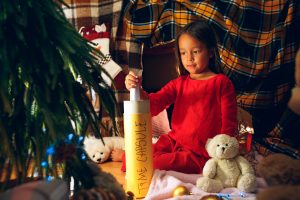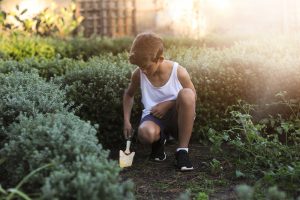History
The aim of history teaching here at Wellesbourne Primary School is to stimulate the children’s interest and understanding about the life of people who lived in the past, in Britain and in the wider world. We teach children about: historical change; the diversity of societies; the relationships between different groups and chronology. Through this, they develop a sense of identity and a cultural understanding based on their historical heritage.
Thus, they learn to value their own and other people’s cultures in modern multicultural Britain and by considering how people lived in the past, they are better able to make their own life choices today. In our school, History makes a significant contribution to citizenship education by teaching about how Britain developed as a democratic society. We teach children to understand how events in the past have influenced our lives today; we also teach them to investigate these past events and, by so doing, to develop the skills of chronological understanding, historical enquiry, analysis, interpretation and problem-solving.
The aims of History in our school are:
- to foster in children an interest in the past and to develop an understanding that enables them to enjoy all that history has to offer;
- to develop an understanding of British History and it’s people and understand how Britain has influenced and been influenced by the wider world;
- to help children understand society and their place within it, so that they develop a sense of their cultural heritage;
- to develop a sense of chronology and understand historical concepts such as similarity and difference, cause and consequence, continuity and change;
- to develop in children, the skills of enquiry, investigation, analysis, evaluation, and presentation including the use of sources.
- to know and understand how the British system of democratic government has developed and in so doing, to contribute to a child’s citizenship education;
- to gain historical perspective and make historical connections by learning about local, regional, national and international history; between cultural, economic, military, political, religious and social history;
- to know and understand the achievements of the earliest civilizations (Ancient Egypt, Ancient Greece), and a Non-European Society (Mayan Civilization)
- to give opportunities to convey understanding / interpretation of past events in a variety of ways and provide situations which foster independent/ co-operative learning.
History Curriculum Map (document opens in new window)
History Progression of Skills (document opens in new window)
History Ambassadors
Independent Learning
Black History Month
History Chronology Day
History in our school
Old Stuff Day
Old Stuff Day was organised to help our children to develop an awareness of the skills that Historians use and develop their ability to ask relevant questions and improve their enquiry skills.
Children in Reception, KS1 and KS2 were given packs to take home containing an ‘Historian Research’ sheet and a supporting letter to explain the task. Children had to choose an artefact that was classed as ‘old stuff’ with an adult from their family and complete the research sheet by interviewing and/or discussing the item with their family member to find out more about it. The sheet was just a starting point. Children were encouraged to find out as much as possible about their item and to ask relevant questions about it as part of their research.
On ‘Old Stuff Day’ the children discussed ‘What makes a good Historian’ with their teacher and contributed their own ideas before their teacher shared a poster with them to remind them. Their own ideas were displayed in class. In class, children learnt new vocabulary, then completed a piece of writing about their artefact using age related expectations, which was later displayed in year groups. Later in the morning, classes were paired (a KS1 class with a KS2 class and Reception with Year 3) so that they could talk about their artefact and share what they had found out abut it with another child. Children were encouraged to ask further relevant questions about the items. . In Nursery and Reception, teachers also brought in ‘old stuff’ to share with the children where they were encouraged to ask questions, share similarities and differences with other known items and learn all about ‘old’ and ‘new’ things and what makes items ‘old’ and ‘new’.
In the afternoon, volunteer visitors came into school to share their experiences of school life from years ago. Year 5 explored the Wellesbourne ‘punishments’ book from yesteryear and Year 6 were able to learn all about school life from their teacher’s grandmother via a video interview before writing about it
Finally, at the end of the day, the children reflected on their learning with their teacher and displayed their ideas in class. Overall, it was a fantastic day and our enquiry skills and questioning were improved. The children thoroughly enjoyed themselves and so did the volunteers! In , the day was so successful that this has been incorporated into their curriculum since then – the children really enjoy it and learn lots from it.
Time Capsules

You won’t realise this now, but at the moment we are making history! The 2020-21 Covid-19 pandemic will ‘go down in the history books’. In the future, children and adults from all around the world will be learning about and remembering social distancing, lockdown and the Coronavirus.
A time capsule, which is also a primary source of evidence from the time that the event happened, is a way of teaching future generations all about what lockdown was really like.
So what is a ‘time capsule’? Time capsules are containers of some kind, which hold information and a selection of objects, picked because they have a special meaning in the time that we’re living in. While everyone will make theirs differently depending on what they think is important, these are some of the basics that you should do to create your time capsule.
The time capsule document (downloadable below) contain some ideas for you to record your life as it is now. You could include all, some of them or make your own.
Think about the container you want to use for your time capsule. Wood, plastic, glass and metal are going to be most durable.
Think about the sorts of things you want to put in your capsule. These may include: some of the ideas from the downloadable booklet below (or you may have made your own similar to these); photographs; a recent newspaper; letters or postcards; a game you have played or a diary you have kept.
Think about where you would like to bury your time capsule for people to find in years to come. You don’t need to bury your capsule – you could keep it sealed until a certain date and share it with your own children or even grandchildren or other relatives!
I would love you to send me pictures of your time capsule if you manage to make one! Enjoy your time ‘making history.’
Mrs. J. Paget Butler, History Subject Leader.
Here are some examples our staff have made.
 Loading...
Loading...
Click here to return to the Curriculum page.











